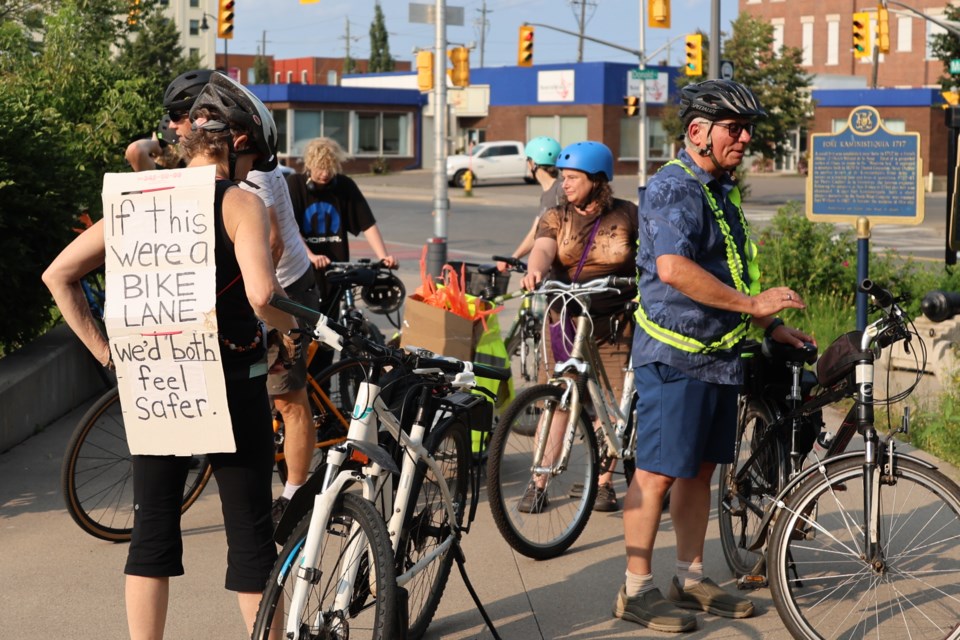THUNDER BAY — Nine active transportation advocates rode their bikes from Waverley Park to city hall Monday to show their support for Thunder Bay’s active transportation master plan.
Ken Shields, one of the local advocates, expressed doubt that the city will meet its five or ten-year goals but emphasized his group’s determination. “We're just trying to keep the active transportation agenda moving along,” he said prior to Monday's council meeting.
“We asked them for an update and to accelerate the timeline in view of many incidents that have happened in the city,” Shields added.
He also pointed to delays on a key north-south cycling route, which “hasn’t been started” and is still projected to take five to ten years to complete.
Shields noted that many parts of Thunder Bay remain difficult for cyclists to access and traverse, such as Memorial Avenue.
The ride was met with mostly positive reactions from the public, with Shields saying that “mostly we get the thumbs up and a little peep honk, you know, so it’s pretty good.”
At Monday’s city council meeting, the engineering division provided an update on the transportation master plan and the active transportation plan.
Matthew Miedema, Thunder Bay's director of engineering, and Matthew Lawrence, the city's mobility coordinator, presented the city’s progress since 2019 and outlined plans moving forward.
Miedema described the transportation master plan's “cornerstone actions” as “long-term strategic moves that set the stage for everything else.” These include a complete streets policy that plans and builds roads for all users, and advancing the road safety action plan through initiatives like safety audits, installing new pedestrian crossings and traffic calming measures such as speed bumps and flexible bollards.
“A key aspect of this initiative is to revamp the city’s traffic safety committee,” he added.
The city has adopted pedestrian and cycling networks with key corridors designated in the official plan. Among 12 priority actions identified, the city said five have seen progress, including:
- Adoption and completion of a traffic calming policy in April
- Multi-modal level of service road design standards
- Transit enhancements like live GPS tracking, electronic fare systems and minor route adjustments
- Traffic signal communication upgrades on Harbour Expressway, Arthur Street and Red River Road, which are slated for synchronization later this year
- Pedestrian and cycling infrastructure improvements.
“Considering we’re only six years into a 20-year plan, progress so far reflects a strong and steady pace of implementation,” Miedema said.
Lawrence highlighted the active transportation plan's five key focus areas: fostering walkable environments with 23 new pedestrian crossovers, engaging youth through school-based travel pilots, which have been expanded to 11 schools, supporting year-round travel by monitoring winter cycling numbers, building community capacity through wayfinding signage, and tracking collision data to prioritize safety investments.
Since 2019, the city has replaced 25 kilometres of sidewalks, built 22 kilometres of new pedestrian infrastructure, added 4.5 kilometres of new sidewalks, and 17.5 kilometres of multi-use trails, city staff said.
Cycling routes are being expanded with a long-term vision, including new north-south corridors, and the bike valet program was relaunched on Canada Day.
